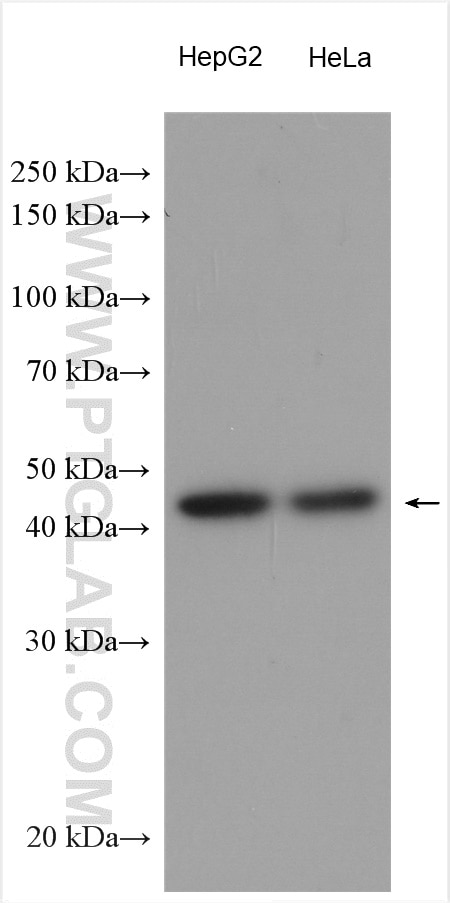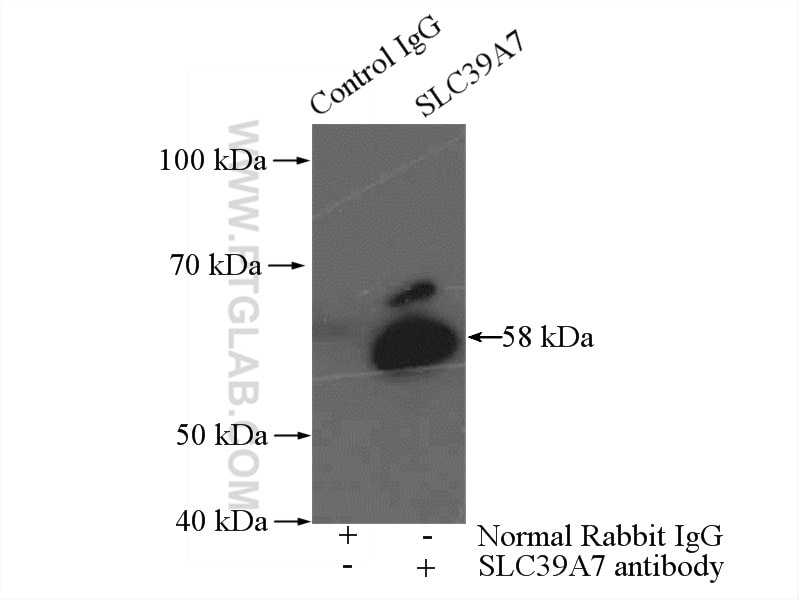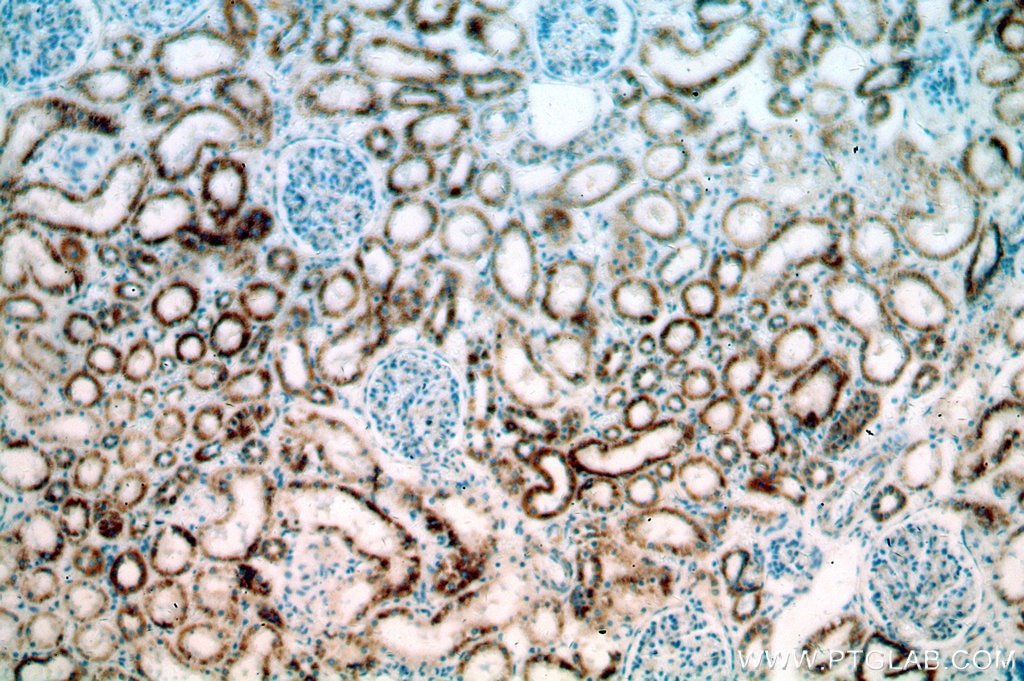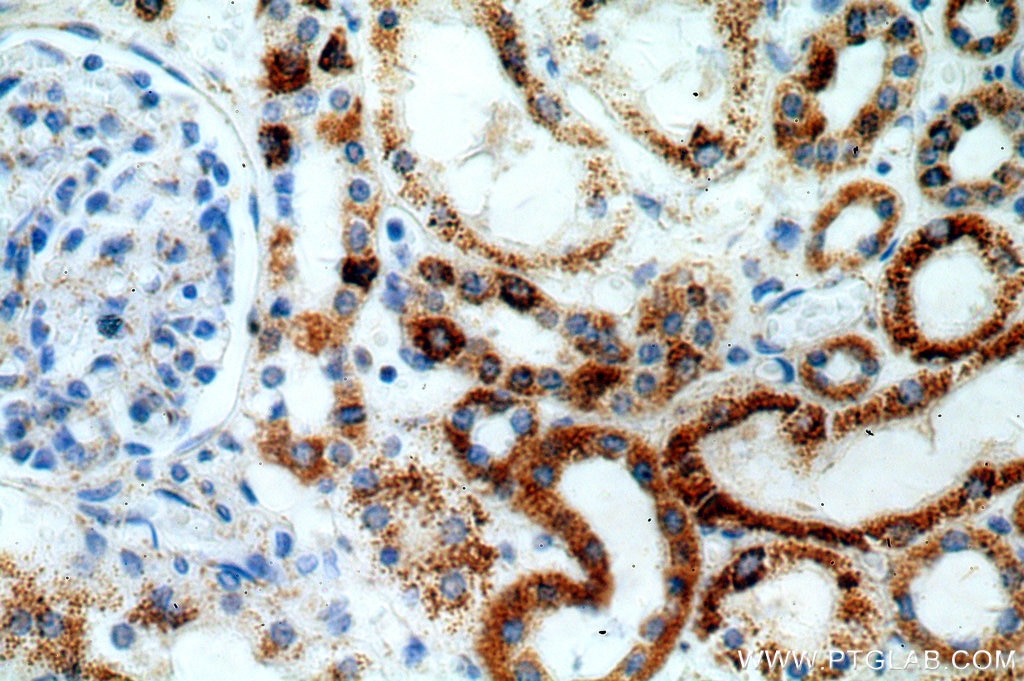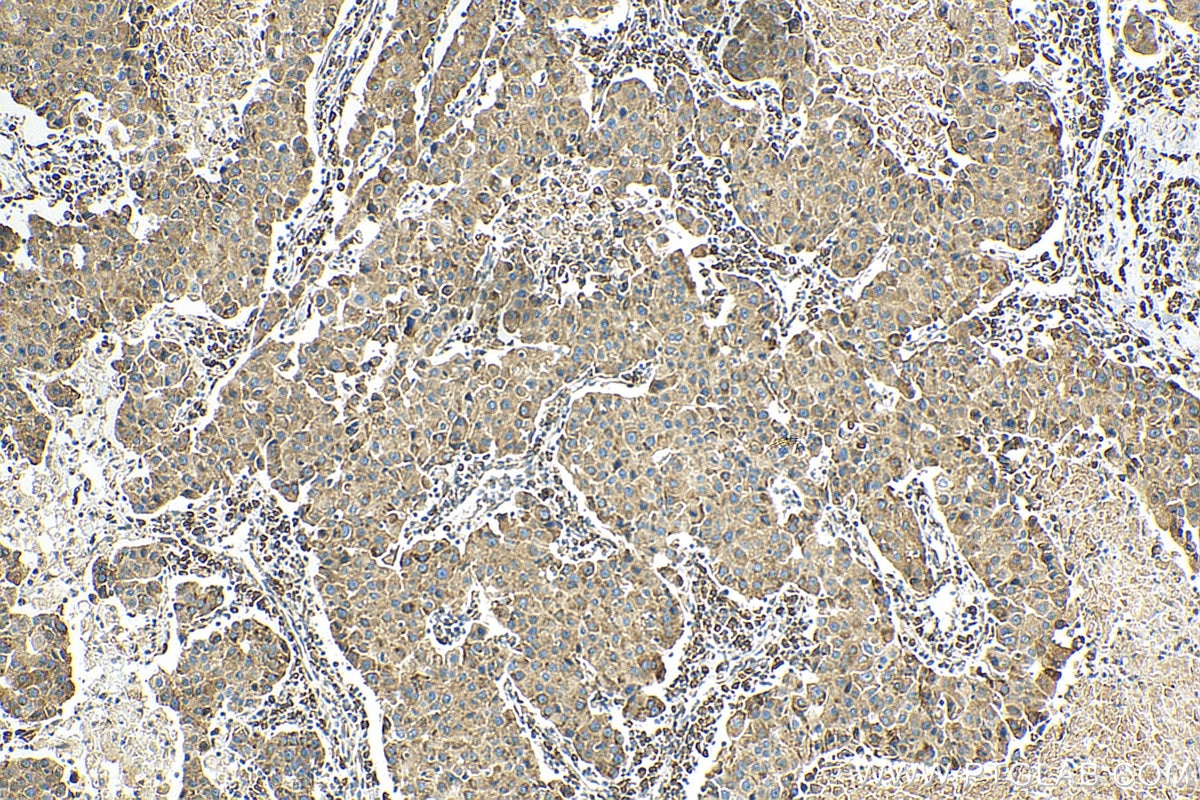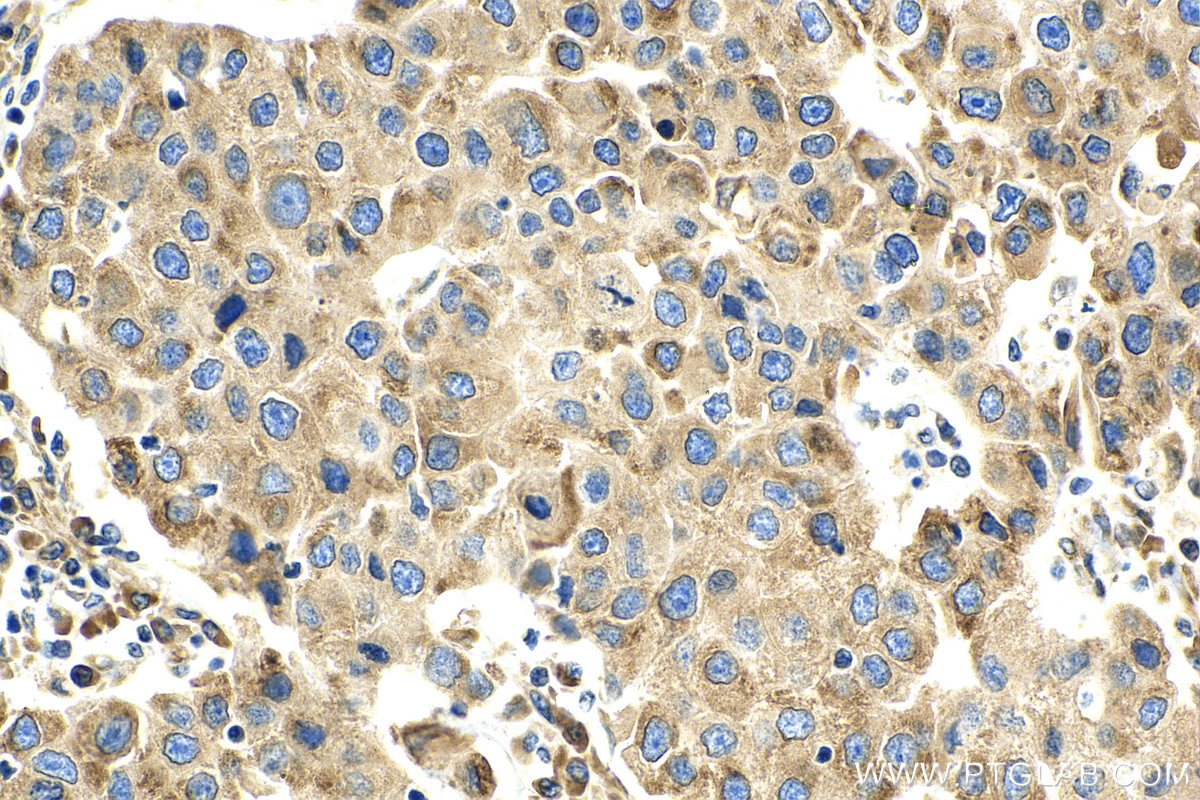- Featured Product
- KD/KO Validated
ZIP7 Polyklonaler Antikörper
ZIP7 Polyklonal Antikörper für IHC, IP, WB, ELISA
Wirt / Isotyp
Kaninchen / IgG
Getestete Reaktivität
human, Maus, Ratte
Anwendung
WB, IP, IHC, IF, ELISA
Konjugation
Unkonjugiert
Kat-Nr. : 19429-1-AP
Synonyme
Galerie der Validierungsdaten
Geprüfte Anwendungen
| Erfolgreiche Detektion in WB | HepG2-Zellen, HeLa-Zellen |
| Erfolgreiche IP | Maushirngewebe |
| Erfolgreiche Detektion in IHC | humanes Nierengewebe, humanes Mammakarzinomgewebe Hinweis: Antigendemaskierung mit TE-Puffer pH 9,0 empfohlen. (*) Wahlweise kann die Antigendemaskierung auch mit Citratpuffer pH 6,0 erfolgen. |
Empfohlene Verdünnung
| Anwendung | Verdünnung |
|---|---|
| Western Blot (WB) | WB : 1:1000-1:8000 |
| Immunpräzipitation (IP) | IP : 0.5-4.0 ug for 1.0-3.0 mg of total protein lysate |
| Immunhistochemie (IHC) | IHC : 1:20-1:200 |
| It is recommended that this reagent should be titrated in each testing system to obtain optimal results. | |
| Sample-dependent, check data in validation data gallery | |
Veröffentlichte Anwendungen
| KD/KO | See 4 publications below |
| WB | See 13 publications below |
| IHC | See 3 publications below |
| IF | See 5 publications below |
Produktinformation
19429-1-AP bindet in WB, IP, IHC, IF, ELISA ZIP7 und zeigt Reaktivität mit human, Maus, Ratten
| Getestete Reaktivität | human, Maus, Ratte |
| In Publikationen genannte Reaktivität | human, Maus, Ratte |
| Wirt / Isotyp | Kaninchen / IgG |
| Klonalität | Polyklonal |
| Typ | Antikörper |
| Immunogen | ZIP7 fusion protein Ag13762 |
| Vollständiger Name | solute carrier family 39 (zinc transporter), member 7 |
| Berechnetes Molekulargewicht | 469 aa, 50 kDa |
| Beobachtetes Molekulargewicht | 45-50 kDa, 56 kDa |
| GenBank-Zugangsnummer | BC000645 |
| Gene symbol | SLC39A7 |
| Gene ID (NCBI) | 7922 |
| Konjugation | Unkonjugiert |
| Form | Liquid |
| Reinigungsmethode | Antigen-Affinitätsreinigung |
| Lagerungspuffer | PBS mit 0.02% Natriumazid und 50% Glycerin pH 7.3. |
| Lagerungsbedingungen | Bei -20°C lagern. Nach dem Versand ein Jahr lang stabil Aliquotieren ist bei -20oC Lagerung nicht notwendig. 20ul Größen enthalten 0,1% BSA. |
Hintergrundinformationen
ZIP7 is a functional zinc transporter transporting zinc from the Golgi apparatus to the cytoplasm of the cell. ZIP7 is post-translationally regulated by CK2-mediated phosphorylation. This ZIP7 phosphorylation results in zinc release from intracellular stores, which activates multiple tyrosine kinases and regulate cell survival and proliferation. Dual bands of 50 kDa and 56 kDa detected by this antibody may represent the native and phosphorylated forms of ZIP7, respectively. (PMID: 28232492, 28205653)
Protokolle
| Produktspezifische Protokolle | |
|---|---|
| WB protocol for ZIP7 antibody 19429-1-AP | Protokoll herunterladen |
| IHC protocol for ZIP7 antibody 19429-1-AP | Protokoll herunterladen |
| IP protocol for ZIP7 antibody 19429-1-AP | Protokoll herunterladen |
| Standard-Protokolle | |
|---|---|
| Klicken Sie hier, um unsere Standardprotokolle anzuzeigen |
Publikationen
| Species | Application | Title |
|---|---|---|
Chem Sci X-ray fluorescence imaging reveals subcellular biometal disturbances in a childhood neurodegenerative disorder. | ||
Cell Death Differ Systematic genetic mapping of necroptosis identifies SLC39A7 as modulator of death receptor trafficking. | ||
Acta Neuropathol Commun Deregulation of subcellular biometal homeostasis through loss of the metal transporter, Zip7, in a childhood neurodegenerative disorder.
| ||
Metallomics Deregulation of biometal homeostasis: the missing link for neuronal ceroid lipofuscinoses? | ||
